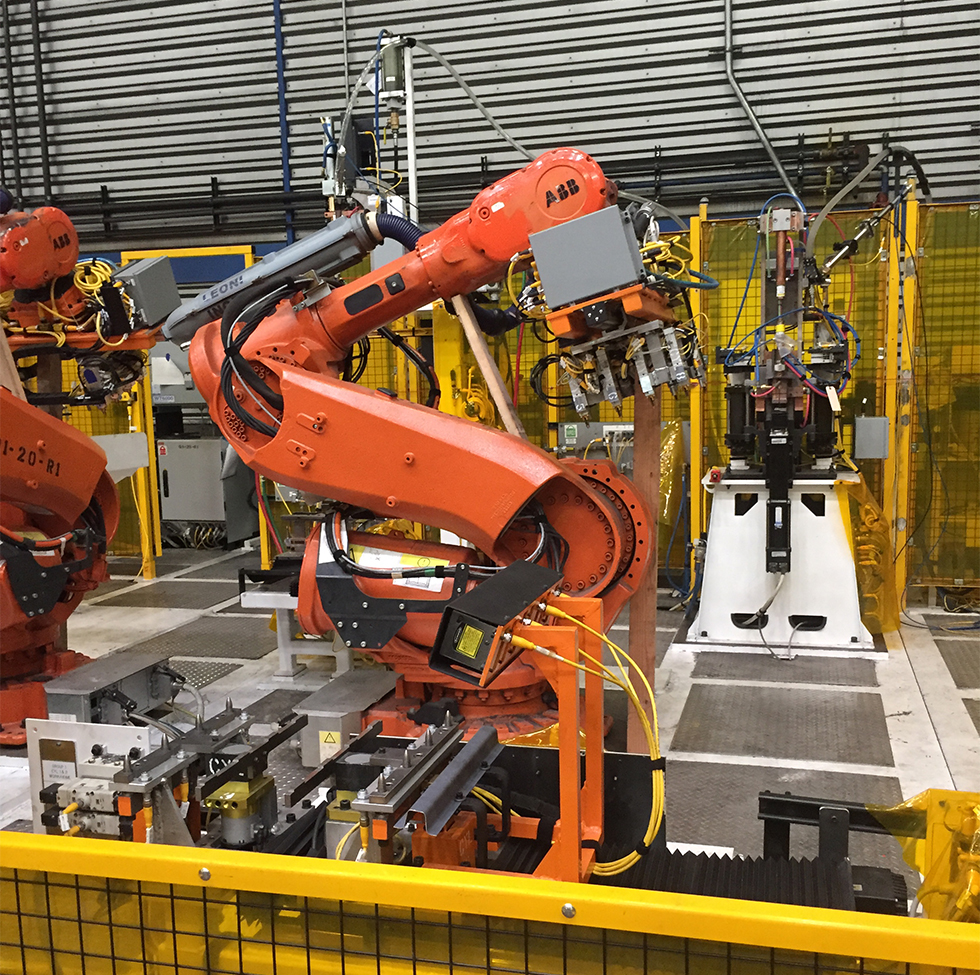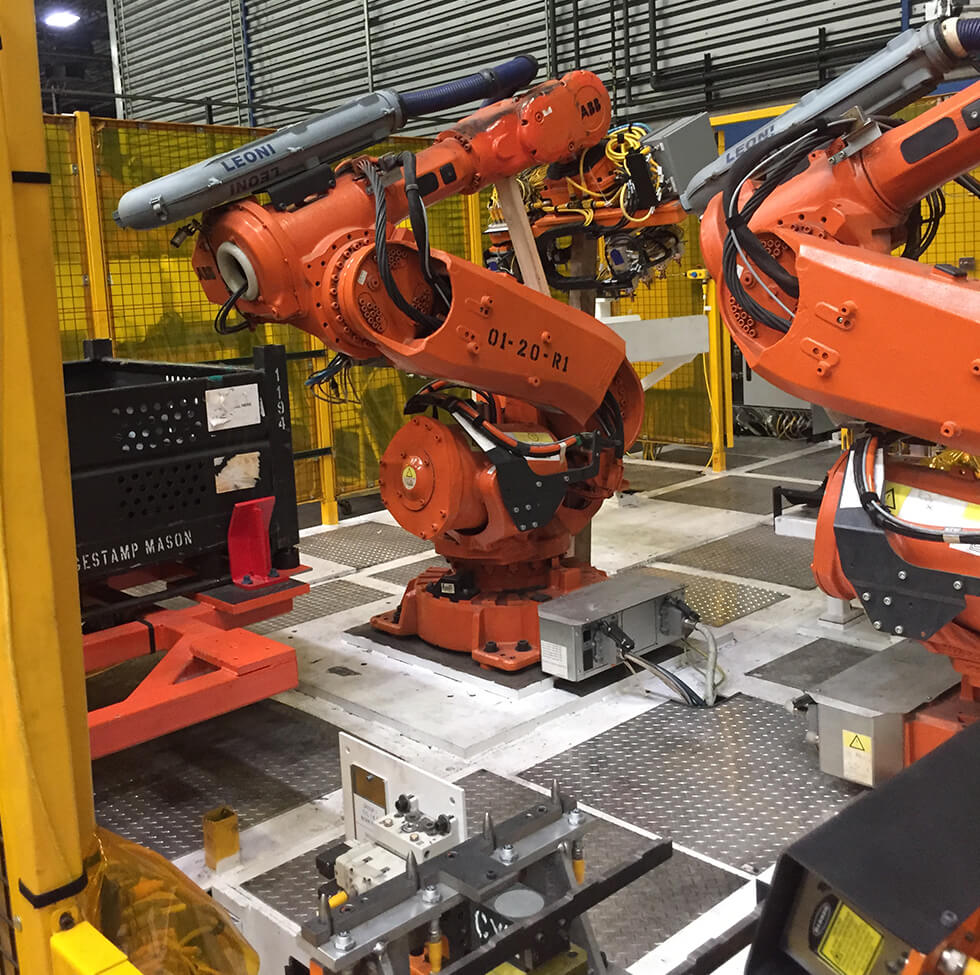TOOLING FIXTURES
WELDING SYSTEMS
SYSTEM INTEGRATION
Gable Manufacturing has decades of experience in industrial automation. We’re Automated Robotic Workcells experts. Automated Robotic systems can increase productivity, quality and production. Our expertise is in robotic work cells, integrating robotic systems, maintaining robotic workcells, and customer support. We can help you with any robotic automation challenges that you have.

Efficient Spatial planning – Robotic workcells can reduce space and fit into limited spaces. They can be set up on pedestals, rails, shelves, walls or ceilings. Cobots (collaborative robots) can reduce or maximize space by eliminating extra fencing.
Enhanced Throughput – Robot workcells can reduce cycling time for parts by performing precision applications at higher speeds. They can also lift heavier objects.
Reduced Waste – Through robotic workcells, industrial robots can produce more consistent products with precision specifications.
Improved Safety – Robotic workcells allow for industrial robots to handle hazardous or redundant operations. They reduce the time staff may be exposed to risky situation involving dust particles, fumes, arc glare or sparks.
Improve Return on Investment (ROI) – Industrial robots can increase efficiency by reducing leave time, breaks, and fatigue experienced by employees. Because they are able to work long spans or continuously, they can help reduce overhead and other costs.
A robotic workcell is a turnkey system that is comprised of the robot, controller, teach pendant, table and peripherals needed for operation. Robotic workcells are designed to operate at high speed and full capacity.
The designed a robotic workcell is determined by the application, size requirements, and operation flow. The steps involved in process are identified to design a system that optimized your operations. Gable Manufacturing robotic workcells are ready for installation at your facility. We can create custom robotic workcells to specific applications, configurations, dimensions, or part manipulation needs.
Gable Manufacturing can take you through the complete robotic integration process. We design plans and offer packages to guide you through the industrial automation process. We will:
Industrial automation can improve quality and reduce production time. Gable Manufacturing can provide you with complete robotic automation solutions. We can implement or improve industrial automation at your business.

Robots – The main component of the workcell is the robot. A workcell can consist of one or multiple robots. The workcell robots can be mounted on the floor, overhead or on a riser. It’s important to consider the robot’s payload capacity, work envelope and reach to ensure it can operate to full capacity while maintaining safety.
Safety Equipment - Many workcells come with a safety package, such as safety light curtains and area scanners, that can emit an infrared light in the open area of the workcell. When the light stream is interrupted, a signal is sent to stop the robot. Welding workcells contain dividers called glare shields to protect from glare and weld spray.
Operation Station – Robotic workcells are designed with an operator station. This is an external control panel located on one of the cell barriers. Standard control panel buttons include stop, hold, reset, servo on, and cycle start. Control panel configurations can vary and be customized.
Barriers – The parameters of the robotic workcell are determined by the established barriers. These may be solid panels, or wire mesh fencing. The type of barrier needed will be determined by the robotic application. Solid paneling is typically used for automated robotic welding and robotic material removal.
Peripheral Equipment – This equipment consists of things such as the robot end-effector. Some factory robots may have vision system integration. Welding workcells include things such as a power source, reamer, wire feeder, and positioner. It’s important to correctly determine the appropriate peripheral equipment needed.